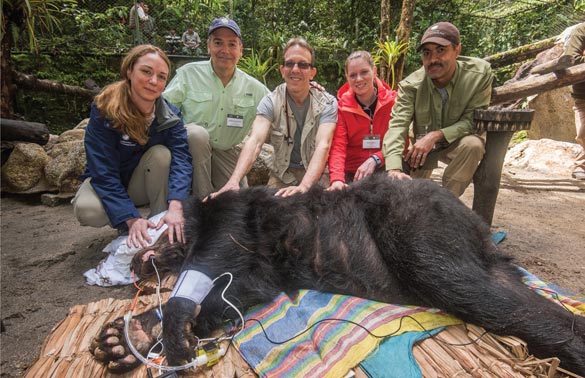At the National Zoo, a lasting mission to save species
Updated August 29, 2019
Dr. Donald L. Neiffer said he could spend days watching the antelopes at the Smithsonian National Zoo Cheetah Conservation Station.
The station houses dama gazelle, lesser kudu, and scimitar-horned oryx. Dr. Neiffer has been the zoo's chief veterinarian for about five years. He directs clinical and pathological operations and participates in research, conservation, and training programs.
This includes working with others on Andean bear conservation in the Machu Picchu region of Peru and investigating zoonotic disease transmission from wart hogs in South Africa.
The 163-acre zoo has about 2,700 animals representing 390 species. Dr. Neiffer said the diversity in the collection reflects the scientific research within the zoo and the Smithsonian Conservation Biology Institute in Front Royal, Virginia, as well as global conservation projects.

The zoo was born in a conservation mission, after William Temple Hornaday, the Smithsonian's chief taxidermist, was shocked by the near eradication of American bison, which sparked a crusade to save the species and others that could disappear. He became head of the Department of Living Animals at the Smithsonian and brought 15 North American species, including deer and foxes, to the National Mall, according to institution history. Nearly 130 years later, the zoo continues to give space and emphasis to species native to North America.
Those species today include wolves, seals, beavers, and eagles.
"I find American Trail to probably be the most relaxing area," Dr. Neiffer said. "It maybe doesn't get as many people, but it's also in a ravine, has a lot of trees, and has a lot of places to sit down and observe the animals."
Staff members from the institutions have worked for decades to help endangered and threatened mammals, birds, fish, and coral throughout the world. Among recent projects, institute staff have worked to reintroduce scimitar-horned oryx in northern Africa, release ground-dwelling Guam rail birds in the Northern Mariana Islands, improve care for Andean bears in Peru, and educate conservation officials in Uganda. In July, Dr. Neiffer traveled to Paraguay for an effort to protect lowland tapirs.
Dr. Neiffer said the zoo is working currently on an exhibition on migratory birds native to the U.S., and zoo staff members are researching the effects of habitat loss, climatic shift, and species survivability. Birds that migrate between hemispheres, in particular, can be good barometers of change in the world. The zoo is trying to showcase the diversity, science, and natural history of those species as well as the challenges they face, he said.
The zoo plans to open the Experience Migration exhibit in 2021 with about 100 bird species and a focus on journeys of migratory songbirds, waterfowl, and shorebirds, zoo information states. The Delaware Bay aviary, for example, will feature shorebird migration from South America to the Arctic tundra, seasonal food availability, and the importance of the bay for birds.
Dr. Neiffer also described the personal effects of work by the zoo.
A few years ago, he was in South Africa's Kruger National Park to investigate bovine tuberculosis in wart hogs. Children tend to be scared of the large aggressive animals, but some gathered around the wart hogs Dr. Neiffer had anesthetized.
Through his stethoscope, he let them listen to the wart hogs' heartbeats, his heartbeat, and their own. He hopes he stirred a passion among those children for human or veterinary medicine.
"When you have those moments when you realize you got through to one kid and maybe changed their trajectory or how they look at things—that is a big moment for me," he said.
Correction: An earlier version of this article misstated how many animals are at the Smithsonian National Zoo.